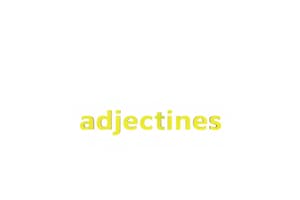Podcast
Questions and Answers
Which sentence correctly uses a comparative adjective?
Which sentence correctly uses a comparative adjective?
- That car is fast of all.
- This book is more interesting than the last one. (correct)
- She is tall as him.
- My house is big than yours.
Which is the correct superlative form of 'happy'?
Which is the correct superlative form of 'happy'?
- happiest (correct)
- happier
- most happy
- more happier
Choose the correct sentence:
Choose the correct sentence:
- This is the most bad idea.
- The cake is more sweet than the pie.
- The weather is colder now than yesterday. (correct)
- He is the goodest student in class.
Which sentence uses the comparative form of 'beautiful' correctly?
Which sentence uses the comparative form of 'beautiful' correctly?
Which option shows the correct usage of 'as...as'?
Which option shows the correct usage of 'as...as'?
Flashcards
Comparison of equality
Comparison of equality
Describes something as equal to something else in terms of qualities or characteristics.
Comparison of superiority
Comparison of superiority
Describes something as having more of a quality or characteristic than something else.
Comparison of inferiority
Comparison of inferiority
Describes something as having less of a quality or characteristic than something else.
Superlative degree
Superlative degree
Signup and view all the flashcards
Comparative degree
Comparative degree
Signup and view all the flashcards
Study Notes
Comparison of Adjectives - A1 Beginner
-
Positive degree: This is the basic form of the adjective, describing a quality without comparing it to anything else. Examples include: big, small, happy, sad, good, bad.
-
Comparative degree: This form is used to compare two things. It is typically formed by adding "-er" to the positive form. Example: bigger, smaller, happier, sadder, better, worse.
-
Superlative degree: This form is used to compare three or more things. It is usually formed by adding "-est" to the positive form. Examples: biggest, smallest, happiest, saddest, best, worst.
Irregular Comparison of Some Adjectives
-
Some adjectives do not follow the regular "-er," "-est" pattern. Learning these irregular forms is crucial. Key examples:
- good/better/best
- bad/worse/worst
- little/less/least
- much/more/most
- far/further/farthest (or further/furthest – both are acceptable)
- old/older/oldest
Simple A1 Practice Exercise Focus: Identifying the Degrees
-
Instructions: Read the sentences and identify which degree of the adjective is used.
- Sentence 1: The cat is smaller than the dog. (Comparative)
- Sentence 2: This is the best cake I've ever had. (Superlative)
- Sentence 3: The weather is good today. (Positive)
- Sentence 4: My red pen is worse than my blue pen. (Comparative)
- Sentence 5: The Eiffel Tower is the tallest building in Paris. (Superlative)
Simple A1 Practice Exercise Focus: Using the degrees in simple sentences
-
Instructions: Complete the sentence with the correct form of the adjective. Use the positive, comparative, or superlative degree as appropriate.
- Example: The book is (big) than my other books. (Answer: bigger)
- Sentence 1: The red apple is ______(big) than the green apple.
- Sentence 2: My bike is the ______(fast) in the neighborhood.
- Sentence 3: My teacher is ______(kind) than other teachers.
- Sentence 4: This house is ______(old) than that one. (Answer: older)
- Sentence 5: This is the ______(good) movie I've seen this year.
Further Notes on A1 Level
-
Context is key: Beginners should focus on easy ways to recognize comparison. The context of the sentence will help determine which degree of the adjective to use.
-
Focus on common adjectives: Initially focus on frequently used adjectives for example "big," "small," "good," "bad," "happy," "sad," "fast," "slow."
-
Avoid complex comparisons: Avoid double comparisons (e.g., more bigger). Stick to the basic rules.
-
Use visuals: Pictures and real-world examples can help. Show students objects or scenarios where appropriate degrees of adjectives can be used.
-
Simple practice: Repeated practice with short sentences is crucial. The focus is on understanding and appropriate usage, not memorization of overly complex rules.
Additional Considerations for A1 Students
- "Than" usage: Emphasize the use of "than" when comparing.
- Pronunciation: Ensure correct pronunciation of both regular and irregular comparative and superlative forms.
- Understanding degrees: Help them understand the difference the degrees imply about the qualities being described.
Studying That Suits You
Use AI to generate personalized quizzes and flashcards to suit your learning preferences.




